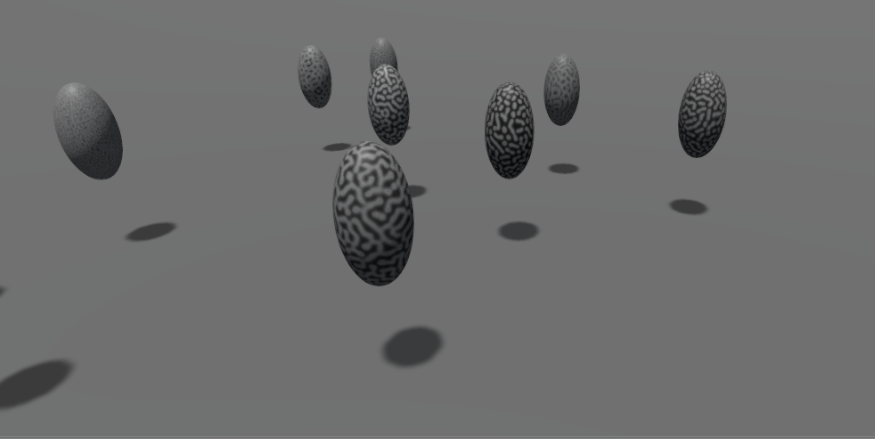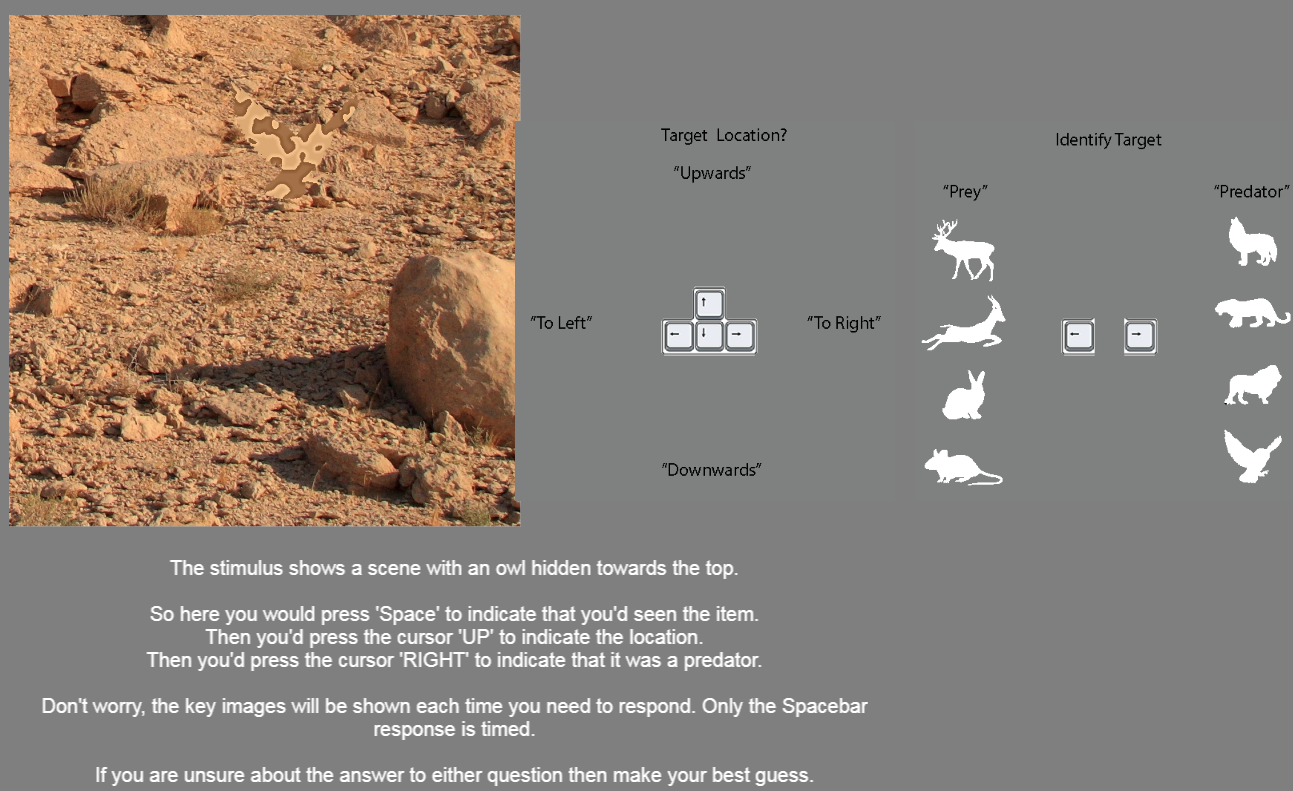Participate in studies investigating the psychology of vision and camouflage
Using Virtual Reality To Explore Camouflage and Colouration
In our lab we are studying animal colouration and visibility using a Virtual Reality based study. If you'd like to participate please feel free to send me an email (p.g.lovell@abertay.ac.uk). The study takes around twenty minutes.

Evaluating the success of various camouflage patterns.
Disruptive colouration is a common form of camouflage which features contrating patches across the body surface which seem to break up the body shape with the consequence that detection and perhaps identification is harder. In this study participants are asked to detect hidden animals with varying camouflage patterns. The your computer will automatically record the speed of your responses. This experiment features roughly 180 seperate trials and will last roughly 30 to 40 minutes. This study runs online and will work from most web browsers. You'll need to maximise your screen size and resolution (press F11 to do this). Click HERE to begin.

Did dazzle camouflage in ships ever work?
During the First World War various 'dazzle' colour schemes were adopted to try and protect ships from submarine attack. They weren't designed to conceal the ship, rather the patterns chosen were designed to mislead those trying to target torpedoes. By misleading perception of speed, distance or direction the torpedo would be incorrectly targetted and would, hopefully, miss the ship. Few studies have looked at the actual utility of these attempts at camouflage.

(SS West Mahomet, 1918)
If you'd like to participate please feel free to send me an email (p.g.lovell@abertay.ac.uk). The study takes around twenty minutes.
Seeing light and shade.
The Adelson Illusion (LINK) provides an excellent illustration of how what we 'see' isn't always synonymous with what we perceive. In this study I'm trying to establish how well the effect reported by Ted Adelson works when the image is presented upside down and with different parts removed. Here is the (LINK) to the study.